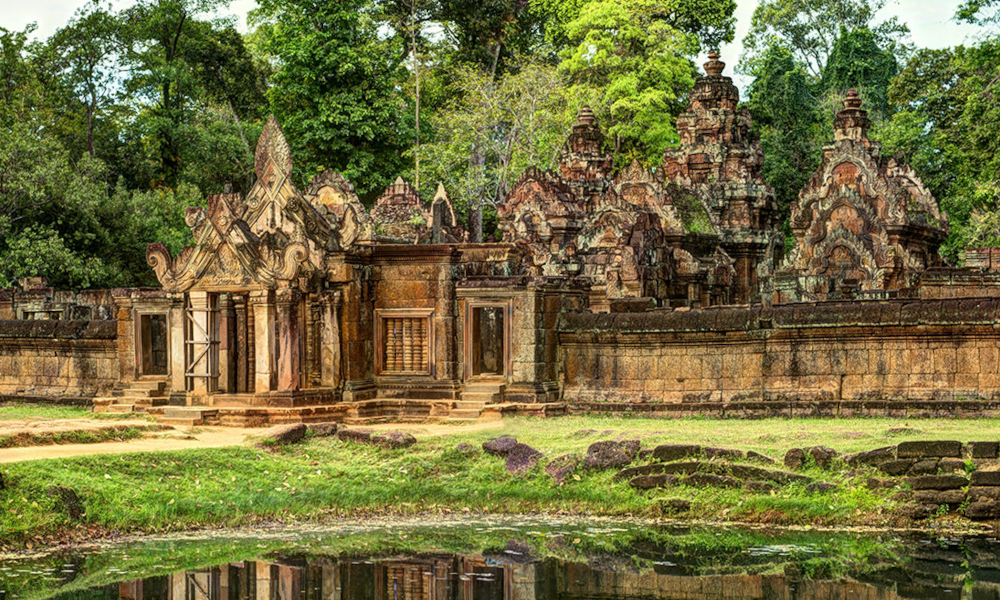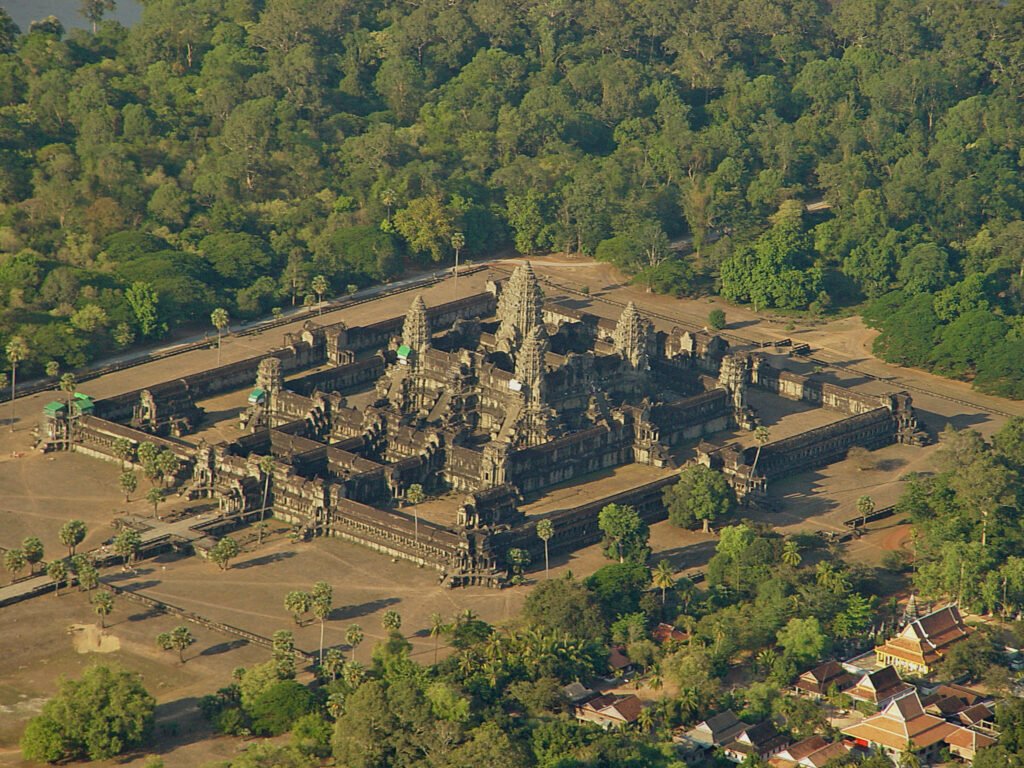Banteay Srei Temple

Banteay Srei is known by various names such as “the lady temple,” “the tiny temple,” and “the pink temple,” reflecting the unique charm of this exquisite structure, which stands in stark contrast to the monumental splendor of the primary Angkorian complex.
Originally named Tribhuvanamahesvara, the contemporary designation Banteay Srei (or Banteay Srey) translates to “citadel of the women” or “citadel of beauty.” This nomenclature is believed to stem from its diminutive size, the rosy hue of the limestone, and the intricate decorative carvings depicting numerous devatas (minor female deities) that adorn its walls.
Start and end in Siem Reap! With the In-depth Cultural Tour Best of Siem Reap 4-Day Tour. Best of Siem Reap 4-Day Tour includes accommodation...
Layout and Design
The temple is oriented towards the east, with an entrance at the beginning of a causeway that leads to three distinct enclosures. Flanking the causeway are the remnants of corridors on both sides. The two outer enclosures, portions of which have either collapsed or been relocated to museums, illustrate various scenes from Hindu mythology.
The temple, known as Banteay Srei, is constructed from reddish sandstone, which has earned it the moniker of the “pink” temple. This soft stone can be carved with ease, resembling wood, which accounts for the extensive ornamental details adorning the structure. Nearly every surface is embellished with intricately depicted narratives and motifs.
Nevertheless, the most intricate carvings are found within the inner enclosure, which contains two libraries and the sanctuary. The temple is primarily dedicated to Shiva, and thus, many of the carvings focus on his figure, although Vishnu is also prominently represented in the structures located on the southern side.
History of Banteay Srie
Banteay Srei was officially completed on April 22, 967 AD, and was dedicated to the deity Shiva, consistent with many temples constructed during that era.
Initially named Tribhuvanamahesvara, which translates to “the lord of the threefold world,” various sections of the temple were devoted to different deities. The structures aligned along the east-west axis and those situated to the south were dedicated to Shiva, while the northern buildings were dedicated to Vishnu.
The contemporary name “Banteay Srei,” meaning “citadel of the women” or “citadel of beauty,” was attributed to the temple due to its elaborate carvings, which prominently feature numerous depictions of devatas.
12th Century:
In the early 12th century, Banteay Srei underwent expansion and continued to be utilized until at least the 14th century. Although the precise date of its abandonment remains uncertain, it is believed to have occurred around the same period as the other temples in Angkor, during the 15th to 16th centuries.
20th Century:
Banteay Srei was rediscovered in 1914. In 1923, following World War One, the French writer and minister André Malraux infamously stole four devatas but was apprehended, leading to their return.
During the 1930s, restoration efforts were undertaken to preserve the temple using methods as close to the original techniques as possible. However, during the Khmer Rouge regime (1975-1979) and the subsequent civil conflict, the temple suffered significant damage from looters.
21st Century:
Between 2000 and 2003, drainage systems were installed to aid in the preservation of the site. Today, Banteay Srei has become one of the most visited temples within the Angkor Archaeological Park, drawing hundreds of visitors daily.
Why Visit Banteay Srei
Banteay Srei stands out as one of the most frequented temples along the tourist circuit, and this popularity is well-deserved. Its exquisite carvings, distinctive architectural style, and the ease with which it can be included in various tour itineraries contribute to its appeal among travelers.
To access this temple, a temple pass is required, making it advisable to pair your visit with other temples to maximize the value of your expenditure. While it is situated not far from the town, it does not draw the same large crowds as the temples located nearer to Angkor. Consequently, visiting Banteay Srei offers a welcome respite from the throngs of tourists.
Location & How to Get There
Other Temples
-
Ak Yum Temple
-
Tep Pranam Temple
-
Khleangs Temple
-
Spean Thma
-
Prasat Suor Prat
-
Preah Pithu Group
-
Preah Palilay
-
Terrace of the Leper King
-
Terrace of the Elephants
-
Phimeanakas Temple
-
Banteay Prei Temple
-
Banteay Srei Temple
-
Prasat Kravan Temple
-
Ta Keo Temple
-
Chau Say Tevoda Temple
-
Thommanon Temple
-
Pre Rup Temple
-
East Mebon Temple
-
Ta Som Temple
-
Neak Pean Temple
-
Phnom Bakheng
-
Phnom Krom Mountain
-
Preah Khan Temple
-
Roluos Group
-
Banteay Kdei Temple
-
Baphuon Temple
-
Banteay Samre Temples
-
Beng Mealea Temple
-
Ta Prohm Temple
-
Bayon Temple
-
Angkor Thom Temple
-
Angkor Wat Temple
Experiences in Siem Reap
-
Cambodia Visa Requirements: All thing you need to know
-
Cambodia SIM Card: How to buy and price details
-
Money Exchange in Cambodia: What travelers need to know?
-
Useful Contacts For Travelers In Cambodia
-
Tourist Info Center: When Travel in Cambodia
-
Angkor Archeological Park
-
Suggested Siem Reap Itineraries
-
Reasons Against Financial Assistance to Begging Children
-
Pub Street
-
Siem Reap’s Local Markets
Cambodia Guide
-
Preah Vihear Province
-
Tonel Sap
-
Siem Reap Province
-
Cambodia Seasons
-
Mekong River
-
Battambang Province
-
Kampot
-
Sihanouk Ville
-
Phnom Penh: The campital city of Cambodia
-
National Religion of Cambodia - Buddhism
-
The History of Cambodia
-
Introduction to Cambodia
-
Public Holidays in Cambodia
-
Best Time to Visit Cambodia

